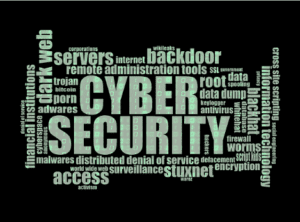The What, Why, and When Of Renewing Your CMMC Assessment
Following the publishing of the Cybersecurity Maturity Model Certification (CMMC) Final Rule on October 15, 2024, and its subsequent operationalization sixty days later, cybersecurity audits are now mandatory for aspiring Department of Defense (DoD) contractors.
Adopting the current CMMC framework provides immense benefits, including access to lucrative defense tenders and enhanced competitive advantage. Even if you’re not a defense supplier, scheduling routine cybersecurity audits can boost your organization’s cyber hygiene.
However, obtaining CMMC certification can be a time- and resource-intensive process. It entails scoping an organization’s IT infrastructure for sensitive information, uncovering CMMC compliance gaps, and implementing proper risk prevention or mitigation controls.
Because CMMC certification is usually a culmination of rigorous cybersecurity assessments, understanding the audit process is critical to accelerating your compliance.
We’ve prepared a comprehensive guide to CMMC assessment, including what it entails, why it matters, and how often you should schedule it.

What Is the CMMC Assessment?
A cybersecurity assessment comprehensively audits an organization’s information security posture. For Defense Industrial Base (DIB) companies, the focus is on CMMC compliance readiness.
CMMC assessment is not just a regulatory requirement. It’s a critical procedure designed to enable defense suppliers to identify risks, threats, and vulnerabilities in their information systems.
DIBs can take advantage of these routine evaluations to align their cybersecurity policy templates with the current CMMC framework. Identified cyber risks are remediated before they become major threats, potentially impacting an organization’s finances and reputation.
CMMC assessments primarily target two categories of sensitive information – Federal Contract Information (FCI) and Controlled Unclassified Information (CUI).
Both Federal Contract Information and Controlled Unclassified Information require protection due to their sensitive nature. The core difference is that FCI isn’t meant for public consumption, whereas CUI may be released to the general public. That distinction designates CUI as more sensitive, hence requiring additional safeguarding.
What Is CMMC Certification?
The terms “assessment” and “certification” are closely related within the framework of CMMC compliance. While CMMC assessment denotes the process of auditing defense contractors for compliance readiness, certification is the culmination of such evaluations.
CMMC certification validates that a DIB company has satisfied the minimum criteria under their respective maturity level and can enjoy the full compliance benefits.
Like most cybersecurity frameworks, CMMC certification may be withdrawn if subsequent assessments uncover glaring gaps in an organization’s cyber hygiene. That underscores the significance of regular cybersecurity audits.

Do I Need a CMMC Assessment?
As mentioned, unveiling the CMMC Final Rule obligates all defense contractors to comply with the new CMMC framework. The process of obtaining compliance begins with assessments.
Previously, the Department of Defense emphasized compliance for established DIBs, giving considerable flexibility to smaller contractors and subcontractors. However, the new framework obliges mandatory compliance for all defense suppliers.
Here are other reasons you need a CMMC assessment;
1. Improving Business Competitiveness
Undergoing CMMC assessments and subsequently obtaining full certification can provide a competitive advantage when bidding for defense contracts.
Note that before exploring other qualifications for awarding tenders, the DoD will start by shortlisting CMMC-compliant applicants. Noncompliance will lead to automatic disqualification.
2. Safeguarding Your Reputation
As well as maximizing defense opportunities, meeting the minimum CMMC requirements can safeguard your brand’s image.
Duly compliant organizations don’t need to worry about major cybersecurity breaches; the occurrence could trigger customer exodus.
3. Escaping Noncompliance Penalties
Defense vendors that do not implement relevant CMMC controls will now run the risk of getting their contracts terminated.
Besides, the DoD may recommend additional penalties like fines and imprisonment, based on the severity of the infraction.
4. Enhancing Operational Continuity
Undertaking CMMC assessments regularly allows you to identify threats while still in their nascent stages.
You can then remediate the risks to avoid operational downtimes triggered by successful breaches or regulatory penalties.
5. Cultivating Accountability
The defense industrial base is a network comprising over 100,000 businesses. However, a breach on a single entity can have far-reaching implications.
The current CMMC framework requires organizations seeking Level 1 CMMC compliance to self-assess. By evaluating their security systems, businesses can now play an active role in safeguarding the defense supply chain.
Besides, organizations may schedule Level 2 and Level 3 assessments frequently rather than wait for the mandatory triennial audits. Taking a proactive approach to cyber protection can be critical in forestalling unprecedented attacks.
6. Fostering Standardization
The defense industrial base pools together businesses of varied niches and scales. As all these companies are jostling for a share of lucrative defense tenders, it was necessary to level the playing field.
By imposing mandatory CMMC assessment and certification, the DoD established a critical criterion for qualifying defense vendors. Applicants must satisfy this one precondition before being vetted on other qualifications.
7. Understanding Own Cyber Hygiene
CMMC assessments must not necessarily uncover security gaps. In fact, it’s better if they don’t.
But even if you recently conducted a cybersecurity audit, scheduling another evaluation can provide critical insights into your organization’s cybersecurity posture.
CMMC audits will uncover the type of sensitive information your company handles. You’ll also understand the assets that host that information, including physical contract documents, CDs, and USB drivers. More importantly, you can leverage the findings to update your cybersecurity templates accordingly.
Delving Into the CMMC Assessment Levels
1. Level 1 (Foundational)
CMMC Level 1 assessments focus on identifying and protecting the handling of federal contract information. This maturity level draws from 17 security controls in the National Institute of Standards and Technology (NIST) Special Publication (SP) 800-171.
The DoD allows companies seeking CMMC Level 1 certification to self-assess and affirm their cybersecurity compliance annually. Affirmation of compliance should be reported on the Supplier Performance Risk System (SPRS).
Note that the provision for self-assessing doesn’t bar you from enlisting in a third-party organization. Engaging an independent assessor may be necessary if you’re a small defense contractor with no in-house cyber team.
2. Level 2 (Expert)
While Level 1 assessments can be arranged internally, you must engage an independent cybersecurity auditor to evaluate your compliance with CMMC Level 2. More importantly, these assessments must be strictly overseen by a CMMC third-party assessor organization (C3PAO). You can find an accredited C3PAO on the Cyber AB marketplace.
Of all the CMMC levels, Level 2 is currently the most important for DIB companies. Audited organizations must demonstrate compliance with all 110 controls in NIST 800-171, with temporary compliance certification awarded to businesses that score at least 80% (or 88 of the 110 controls).
In the case of conditional certification, you’ll be required to remediate any gaps in a Plan of Action and Milestones (POA&M) document within 180 days of the assessment. Falling short of this requirement may have your certification withdrawn.
Level 2 CMMC assessments are required every three years, although companies must affirm their continued compliance with the SPRS annually.
3. Level 3 (Advanced)
This is the most sophisticated CMMC Level, and assessments evaluate an organization’s ability to guard against Advanced Persistent Threats (APTs).
CMMC Level 3 aligns with NIST 800-171 plus additional controls in NIST 800-172.
Audits are conducted triennially by assessors authorized by the Defense Industrial Base Cybersecurity Assessment Center (DIBCAC).

Step-by-Step Guide to Conducting CMMC Assessments
1. Define the assessment scope.
Identify your organization’s assets that need to be audited. Those may include;
- Organizational Facilities – Assets that secure your company from physical intrusion or data damage, such as locks, camera and alarm installations, and power backup.
- Network Equipment – Physical assets like routers and switches, as well as software capabilities like wireless connections and firewalls.
- Data Security – Targets how your organization handles sensitive data, including enabling access control and encryption.
- Server Security – Focuses on server-related issues, such as malware protection and server redundancy.
- Company Policy – Evaluates how your cybersecurity risk management policies, including data recovery plans, align with the CMMC framework.
- Third-Party Security – Evaluates what your business partners are doing to secure the entire supply chain.
2. Uncover threats and vulnerabilities.
Thoroughly scope your assets for security weaknesses.
3. Analyze the risks.
Cybersecurity risks vary in type and severity. It’s crucial to analyze the impact of each threat uncovered, based on the following parameters;
- Ease of reproducibility
- Ease of exploitability
- Prevalence of similar threats in your industry
- Existing precedents in dealing with similar threats
4. Prioritize the risks.
If a gap analysis uncovers several security weaknesses, the next step in CMMC assessment is to prioritize the risks.
You can ignore a risk if it poses no significant danger to your system. However, the rule is to mitigate all threats by deploying the security controls in your CMMC maturity level.
5. Create a report.
After remediating all threats, document the risks for future reference.
6. Update your cybersecurity framework.
This step entails updating your existing cybersecurity policy documents to align with the controls at the CMMC maturity level your organization is auditing.
7. Schedule regular assessments.
Although each CMMC Level requires mandatory assessment after a given period, you can further secure your information systems by conducting regular audits.

Staying Ahead Of CMMC Compliance
Effective December 16, 2024, defense contractors must demonstrate compliance with the Cybersecurity Maturity Model Certification framework to qualify for tenders.
Scheduling a CMMC assessment is a significant step towards obtaining relevant certification, the lack of which may have you slapped with hefty noncompliance penalties. During routine CMMC audits, you can also gain invaluable insights into your organization’s cybersecurity posture and seal any compliance gaps to protect your system from unforeseen attacks.
While you can self-audit for CMMC Level 1, Levels 2 and 3 evaluations must strictly be conducted by an accredited C3PAO.
Remember to perform regular internal cybersecurity audits in preparation for mandatory assessments. By sealing the security gaps uncovered during routine internal audits, you can streamline C3PAO-led evaluations and accelerate your quest for CMMC compliance.

Recent Comments